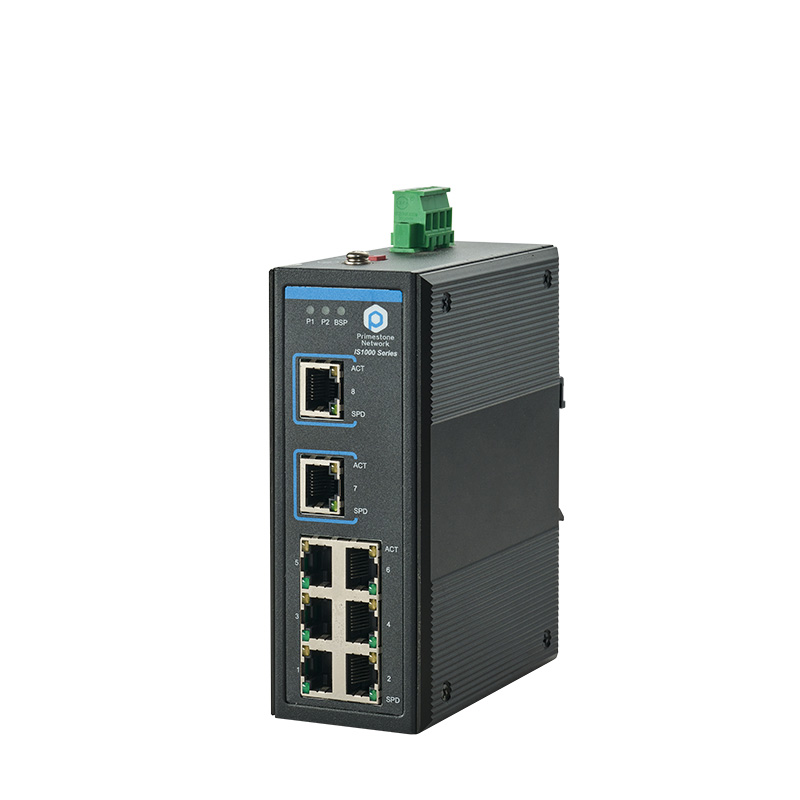The industrial Ethernet switch is also called the Industrial Switch, that is, the Ethernet switch equipment applied to the industrial control field. Because of the network standard adopted, it has good openness, wide application and low price, and uses transparent and unified TCP/IP protocol. Ethernet has become the main communication standard in the industrial control field. Industrial Ethernet switches have carrier class performance characteristics and can withstand harsh working environments. The product series is rich and the port configuration is flexible, which can meet the use needs of various industrial fields. The product adopts wide temperature design, with protection level no less than IP30, and supports standard and private ring network redundancy protocols.
The difference between industrial Ethernet switch and ordinary switch is mainly reflected in function and performance.
The difference in function mainly refers to that the industrial Ethernet switch is closer to the industrial network communication in function, such as the interconnection with various field buses, the redundancy of equipment and the real-time of equipment;
The difference in performance is mainly reflected in the difference in adapting to the external environment parameters. In addition to many particularly harsh environments such as coal mines and ships, industrial environments also have special requirements on EMI (electromagnetic compatibility), temperature, humidity and dust prevention. The influence of temperature on industrial network equipment is the most extensive.
Industrial Ethernet switches particularly emphasize the design of other products and the selection of components and parts. They are oriented to the needs of industrial sites. They can still work normally under mechanical, climatic, electromagnetic and other harsh environmental conditions. Therefore, they are often widely used in industrial production scenarios, where the conditions are relatively harsh and the requirements for product stability and safety performance are higher, as shown in the following aspects:

1. Components: Industrial Ethernet switches have higher requirements for the selection of components. They must be able to better meet the needs of industrial production sites. Components shall be anti-static, lightning proof and super high temperature resistant.
2. Climatic environment: The industrial Ethernet switch can better adapt to the harsh climatic environment, including temperature, humidity, etc., and can be used normally under the ambient temperature of - 40~+85 ° C. The product port lightning protection is 3600V or above.
3. Mechanical environment: Industrial Ethernet switch can better adapt to harsh mechanical environment, including impact resistance, impact resistance, corrosion resistance, dust-proof, waterproof, etc.
4. Working voltage: the working voltage range of industrial Ethernet switch is wide, covering the DC 12V-48V range. Common switch voltage requirements are high, and most of them are fixed voltage power supplies.
5. Electromagnetic environment: The industrial Ethernet switch has strong anti electromagnetic interference capability, and the electromagnetic interference protection level reaches level 4.
6. Power supply design: The common switch is basically a single power supply, while the industrial Ethernet switch power supply is redundant dual power supplies for mutual backup, and the power failure alarm function is also added.
7. Installation method: Industrial Ethernet switch can be installed with DIN rail, rack, etc. Common switches are usually racks or desktops.
8. Heat dissipation mode: Industrial Ethernet switches use fanless enclosures for heat dissipation, while ordinary switches use fans for heat dissipation.
Contact: sales
Phone: 18688787693
E-mail: sales@hsindustrialswitch.com
Add: Room 608, Building B,GaoXinQi TEC Park,Baoan District, ShenZhen,China